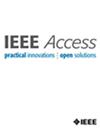WISP: Workframe for Interferogram Signal Phase-Unwrapping
IF 3.6
3区 计算机科学
Q2 COMPUTER SCIENCE, INFORMATION SYSTEMS
引用次数: 0
Abstract
This paper proposes an iterative framework WISP (Workframe for Interferogram Signal Phase-unwrapping for phase reconstruction from interferograms of complex phase objects. The framework processes each interferogram through the sequential stages: dark fringe tracing, isophase distribution, local gradient direction estimation, anisotropic (local direction dependent) diffusion smoothing, phase unwrapping, and convergence testing. Iterations continue until the difference between the reconstructed and experimental phase distributions reaches an asymptotic minimum. A key contribution is the proposed loss function for isophase fitting, which directly optimizes curve quality and enhances reconstruction accuracy. Experimental results confirm the algorithm’s highest precision. A study of the framework’s resistance to noise was conducted, showing high stability even in the case of noise with an amplitude half the amplitude of the image brightness. Comparative analysis against established baselines reveals that the WISP consistently outperforms alternative approaches in accurately unwrapping the phase, particularly under high noise conditions. Evaluated using RMSD metrics, WISP achieves the lowest reconstruction errors, reducing them by 39.7% compared to the next best method (Deep Convolutional Neural Network), highlighting its superior robustness and accuracy.干涉图信号相位展开的工作框架
本文提出了一种迭代框架WISP (Workframe for Interferogram Signal phase -unwrap),用于复杂相位目标干涉图的相位重建。该框架通过顺序的阶段处理每个干涉图:暗条纹跟踪,等相位分布,局部梯度方向估计,各向异性(局部方向依赖)扩散平滑,相位展开和收敛测试。迭代继续进行,直到重建的相位分布与实验的相位分布之差达到渐近最小值。一个关键的贡献是提出的等相拟合损失函数,它直接优化了曲线质量,提高了重建精度。实验结果表明,该算法具有较高的精度。对该框架的抗噪声性能进行了研究,即使在振幅为图像亮度振幅的一半的情况下,也显示出较高的稳定性。与既定基线的对比分析表明,在准确展开相位方面,WISP始终优于其他方法,特别是在高噪声条件下。使用RMSD指标进行评估,WISP实现了最低的重建误差,与次优方法(深度卷积神经网络)相比减少了39.7%,突出了其优越的鲁棒性和准确性。
本文章由计算机程序翻译,如有差异,请以英文原文为准。
求助全文
约1分钟内获得全文
求助全文
来源期刊

IEEE Access
COMPUTER SCIENCE, INFORMATION SYSTEMSENGIN-ENGINEERING, ELECTRICAL & ELECTRONIC
CiteScore
9.80
自引率
7.70%
发文量
6673
审稿时长
6 weeks
期刊介绍:
IEEE Access® is a multidisciplinary, open access (OA), applications-oriented, all-electronic archival journal that continuously presents the results of original research or development across all of IEEE''s fields of interest.
IEEE Access will publish articles that are of high interest to readers, original, technically correct, and clearly presented. Supported by author publication charges (APC), its hallmarks are a rapid peer review and publication process with open access to all readers. Unlike IEEE''s traditional Transactions or Journals, reviews are "binary", in that reviewers will either Accept or Reject an article in the form it is submitted in order to achieve rapid turnaround. Especially encouraged are submissions on:
Multidisciplinary topics, or applications-oriented articles and negative results that do not fit within the scope of IEEE''s traditional journals.
Practical articles discussing new experiments or measurement techniques, interesting solutions to engineering.
Development of new or improved fabrication or manufacturing techniques.
Reviews or survey articles of new or evolving fields oriented to assist others in understanding the new area.
 求助内容:
求助内容: 应助结果提醒方式:
应助结果提醒方式:


